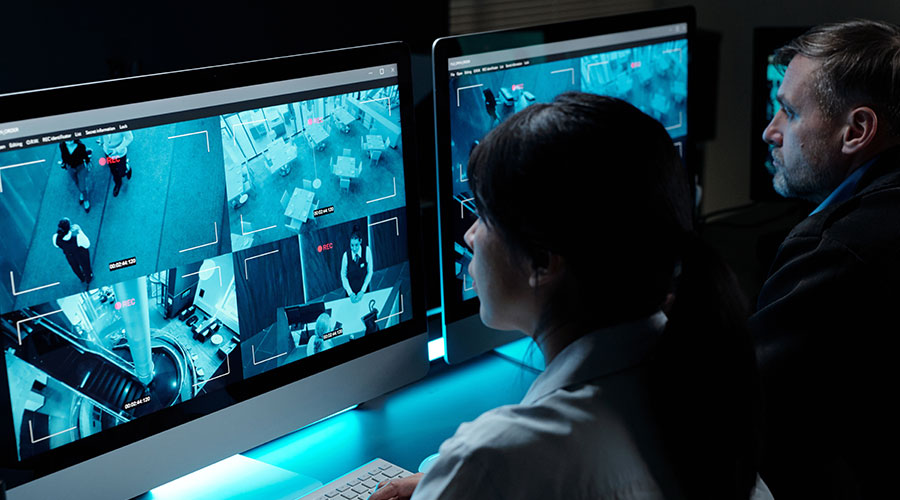Hybrid working has become the norm in the offices of many healthcare administrative and support staff, but it is not without its challenges. As explored in JLL’s latest Global Occupancy Planning Benchmarking Report 2024, a hybrid workplace creates complex demands for a healthcare facilities team.
While hybrid working provides flexibility for teams and individuals to adapt their working week, it complicates long-term planning and management of space. Due to these complications, many healthcare organizations have resisted reconfiguring and resizing their spaces for fear of creating overcrowded or underused spaces amid uncertainty about actual occupancy trends.
Rethinking office spaces can deliver many benefits. One benefit is that the cost savings achieved by shrinking the administrative real estate footprint could be reinvested in creating a more functional and productive office where employees will gravitate to. Another benefit is a more efficient real estate portfolio, with improved space utilization and energy savings from facilities management that is aligned with actual space use on any given day.
Steps to rightsizing
How can healthcare facilities managers right-size their administrative space for hybrid working? The key to a successful strategy for aligning the office with hybrid begins with understanding the way employees use the office today (or don’t) and uncovering the factors that would make the office more functional and productive for today’s work styles. The following are six steps to creating a workplace strategy that will achieve the right outcomes.
Create a multi-disciplinary team. An occupancy planning and workplace strategy should not be the purview of the real estate department alone. Instead, IT, human resources, the legal department, finance and other support services should be engaged in the effort to capture valuable insights and ideas, inform budgets, help manage the change and ensure that workplace initiatives comply with corporate policy and legal requirements.
Consider an occupancy study. A full-fledged occupancy study can be invaluable for comprehensive data gathering, analysis and recommendations. An occupancy study performed by an objective third party can identify and weigh competing stakeholder trends and concerns, making it easier to secure C-suite buy-in for reshaping the workplace.
Uncover employee perspectives. In lieu of a third-party occupancy study, in-house teams can use surveys and conversations with employees to gather extensive information about office utilization.
Uncovering employee behaviors, needs, preferences and perceptions is an essential step toward understanding utilization dynamics. Understanding different work styles — whether based on job function, generational differences or individual preferences — can provide vital information for planning successful hybrid workplaces. For example, an employee might prefer a home office for focused work because the office lacks privacy and quiet workspaces, or they might feel the office lacks comfortable alternatives to a traditional desk.
Gather data. Hybrid workplace optimization programs are most successful when backed by occupancy and utilization data. Building and workplace technologies generate more data than ever before, providing greater certainty for ongoing occupancy planning and portfolio optimization.
Security badge data is the primary data source used by 97 percent of organizations for utilization tracking, according to JLL’s research. While useful, badge data does not reveal the reason an employee came to the office that day or which parts of the office they are occupying, other than areas that require badge access. Wi-Fi logins can provide additional information about where employees are working. Another option is to install short-term or permanent wireless sensors, including motion sensors, to gather ongoing anonymized data about when spaces are used and to what extent.
Compare survey findings to data-driven findings. Employee perceptions do not always match data-driven findings about employee behavior. For instance, employees might perceive a space as being more crowded or emptier than it actually is simply because it feels that way. For that reason, it is helpful to have quantitative and qualitative inputs when assessing occupancy.
Establish a strategy. With a better understanding of real-world occupancy, it is easier to identify opportunities to improve the hybrid workplace experience while reducing office square footage. Often, data will reveal opportunities to consolidate spaces and exit leases, reducing long-term occupancy costs and freeing capital to invest in workplace redesigns and improvements.
The strategy also might encompass opportunities to co-locate departments that interact frequently, need similar types of workspaces and could share office equipment, further improving efficiency.
Time to get creative
When capital is not available for a full-fledged hybrid office overhaul, even modest investments can create a more welcoming and productive space. For example, if employee surveys show dissatisfaction with office technology, managers can invest in a superior experience with dual screens or large monitors and high-quality printers. If employees dislike the office lighting, managers might replace tall cubicle walls with shorter panels, replacing some interior walls with glass and finding other ways to allow more natural light into the workplace.
Small gestures also can make the office more inviting. Plants can help reduce stress and enhance employees’ moods. Meanwhile, the kitchen can be updated with an espresso machine or transformed into a social space with casual seating that invites lingering. Welcome packets filled with helpful information like floor plans and amenity maps, operating hours and local restaurants also can ease employees’ transition back into the office.
With an effective strategy in place, it is possible to optimize the workplace around hybrid working while providing plenty of reasons for employees to want to be in the office. Despite the popularity of remote work, the office remains the best place for building teamwork and culture, fostering collaboration and making valuable contacts with colleagues.
In a time of immense change and stress in healthcare facilities, a more efficient, productive and enjoyable administrative workplace can be a powerful tool for helping an organization thrive today and into the future.
Amy Nunziata is executive vice president of operations with JLL’s healthcare work dynamics division.

 How Healthcare Facilities Can Be Truly Disaster-Resilient
How Healthcare Facilities Can Be Truly Disaster-Resilient TriasMD Breaks Ground on DISC Surgery Center for San Fernando Valley
TriasMD Breaks Ground on DISC Surgery Center for San Fernando Valley Bigfork Valley Hospital Falls Victim to Data Breach
Bigfork Valley Hospital Falls Victim to Data Breach AI-Driven Facilities: Strategic Planning and Cost Management
AI-Driven Facilities: Strategic Planning and Cost Management  Double Homicide Suspect Hides from Police in Upstate Community Hospital
Double Homicide Suspect Hides from Police in Upstate Community Hospital